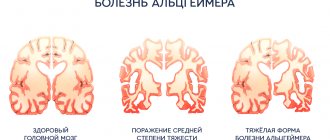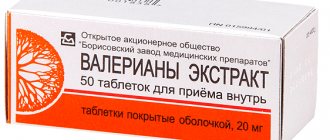Obsessive compulsive disorder is a mental disorder in which the patient experiences obsessive thoughts. They arise against the will of man. To reduce the level of anxiety, a person performs certain actions.
What is compulsive obsessive personality disorder?
According to ICD 10, obsessive compulsive disorder is defined as repetitive obsessive thoughts or compulsions. Thoughts manifest themselves in the form of images, ideas and motivations that constantly come to a person’s mind in the form of stereotypes. In most cases, they are upsetting, so the patient tries to resist them, but this does not bring the desired result. The patient himself does not determine the disgusting and involuntary nature of his thoughts.
Obsessive behavior manifests itself in the form of stereotypical mannerisms that people constantly repeat. They do not allow useful tasks to be performed and do not bring pleasure to the patient. A patient with pathology performs actions to prevent bad events that, in his opinion, will happen soon. The patient believes that the actions are meaningless and ineffective and tries to repeat them. The pathological process is accompanied by constant anxiety. When compulsive actions are suppressed, an increase in anxiety is observed.
Diagnosis of OCD
According to the International Classification of Diseases (ICD-10), to make a diagnosis, it is important that obsessions and/or compulsions have been observed with noticeable frequency for at least two consecutive weeks and are accompanied by a state of distress. Symptoms must have the following characteristics:
- The patient's thoughts or impulses are his own, not caused by external factors.
- There is at least one thought or action that the patient tries unsuccessfully to resist.
- The thought of performing a compulsive action is in itself unpleasant (merely reducing tension or anxiety is not considered pleasant in this sense).
- Thoughts, images, or impulses repeat themselves in a stereotypical manner.
When diagnosing OCD, it is important to separate its symptoms from those of other diseases. Obsessions and compulsions can develop during exacerbations of schizophrenia, as well as with Tourette's syndrome. Problems similar to OCD may also be characteristic of obsessive-compulsive personality disorder. But if people with OCD realize that their obsessive actions are irrational, and they themselves experience discomfort from them, for a person with a personality disorder, the obsessive desire for accuracy is perceived as a manifestation of perfectionism and brings him pleasure.
Symptoms of obsessive compulsive disorder
With pathology, patients experience the occurrence of corresponding symptoms. Patients complain of the occurrence of repeated thoughts, desires or images that are difficult to get rid of. A person perceives them as undesirable, which leads to fear and anxiety.
The patient tries to ignore emerging desires, thoughts and images. To do this, he uses other actions, rituals and thoughts. This provides temporary relief, but does not provide a solution to the problem. Obsessive thoughts appear in the form of:
- Fear of windows, doors, and plumbing taps being left open;
- When contacting objects and people, a person develops a fear of contamination;
- After leaving home, a person worries about whether he turned off the gas stove or plumbing fixtures;
- An obsessive desire to disseminate information that could harm the patient himself, those around him and his loved ones;
- The desire to clean up or organize things correctly.
Compulsions are actions and thoughts that are constantly repeated and characterized by the presence of a clear sequence. Mental acts or compulsions are used by a person to eliminate anxiety and distress. They appear after obsessions. Compulsions manifest themselves in the following actions:
- A person constantly checks equipment, locks and switches;
- The patient washes his hands or uses special means to clean them;
- The patient avoids contact with people, animals and objects that, in his opinion, are contagious;
- A person constantly repeats prayers and mental rituals to avoid unwanted consequences.
- With pathology, the patient does not visit certain places and events due to fear of disaster. Most patients do not go out onto balconies, are afraid to stand on the edge of the platform, refuse to drive vehicles, etc.
The patient himself may not notice the symptoms of obsessive compulsive disorder for a long time. therefore, if his relatives have identified the first signs of pathology, they need to consult a psychotherapist and persuade the patient to visit a specialist.
Obsessions
Intrusive thoughts vary from patient to patient. Currently, the following classification of obsessive thoughts is accepted:
- doubts;
- fears;
- contrasting obsessions.
Doubts are characterized by constant thoughts about some action that has already been completed. The patient doubts whether he closed the door, turned off the gas, or paid for the phone. The peculiarity of such thoughts is that they return again after rechecking. The patient does not calm down and may approach the already closed door many times a day. It is interesting that normally, such doubts can arise in everyone; the problem appears when they become disturbing, illogical and intrusive.
Contrasting obsessions are unpleasant thoughts that seem disgusting, unnatural, and blasphemous to the patient. The most common images are the fear of harming yourself or loved ones. Sometimes patients are afraid to express an offensive thought or say or do something immoral. A separate category of contrasting phobias are obsessive thoughts of blasphemous content - offensive to the ideals of the patient (his worldview, religious self-awareness) - a special version of obsessions, usually arising in believers, pious people, manifested in painful thoughts and ideas for the patient, offensive and indecent in relation to God , Mother of God, Saints (most clergy of various denominations can determine when a parishioner’s “wrong thoughts” are sinful thoughts, and when they are a symptom of a mental disorder, and send them to a doctor and even bless them for treatment by a psychiatrist).
Another category is pollution obsessions. They are so widespread that they have received a special name. Fear of pollution is called mysophobia. The patient is afraid of getting infected, afraid of germs. To overcome his fear, he can wash his hands every hour and clean several times a day.
If obsessions become more complex, the patient begins to come up with actions and rituals aimed at calming down. After such a ritual he feels better. In the case of fear of contamination, this may be a fear of specific objects and places, or washing hands in a strictly defined sequence.
Causes of compulsive obsessive disorder
The occurrence of pathology is observed under the influence of various provoking factors. The pathological process is diagnosed in people with a genetic predisposition. At risk are suspicious people who tend to doubt and constantly double-check incoming information.
If a child was brought up within strict boundaries and his parents often forbade him to do something, then this leads to obsessive compulsive disorder. When stressful situations arise against the background of fear, the development of pathology is diagnosed. The disease appears in people who often experience nervous strain.
Causes and prerequisites for the development of the disease
There are a number of factors that can trigger the development of this mental disorder:
- hereditary predisposition;
- certain character traits;
- mental traumas that have not been properly processed;
- long stay in a traumatic situation.
As for heredity, a predisposition to certain mental disorders can be inherited, as can certain personality traits that, under unfavorable conditions, lead to the development of OCD. Also, the development of the disease can be facilitated by a certain pattern of behavior in traumatic situations, established in childhood.
Obsessive-compulsive disorder can be triggered by mental trauma or painful memories of it that do not let go of the patient. Mental exhaustion due to prolonged periods of stress also increases the risk of OCD. And, of course, personality traits and individual behavior patterns play a decisive role.
Drug treatment of compulsive obsessive disorder
In case of pathology, the use of medications is recommended, with the help of which the severity of symptoms is relieved and the causes of the disease are eliminated. Patients are recommended to use:
- Sedatives. Patients are prescribed nootropic drugs. They improve concentration and stimulate mental activity. Patients are recommended to take Glycine and its analogues.
- Herbal preparations. These medications are characterized not only by their effectiveness, but also by their safety. They are developed on the basis of extracts of medicinal plants, which are characterized by a calming effect. The main components of the medicine are valerian, motherwort, sage, chamomile, and lemon balm.
- Vitamins and minerals. With a lack of these components in the human body, anxiety and stress increase. In case of mild pathology, patients are given the right set of medications that have an anti-stress effect, which helps improve the situation. Such complexes include vitamins in increased dosages, which have a positive effect on the performance of the nervous system. Patients are recommended to take vitamin C to support immunity, B vitamins, vitamin E, magnesium, calcium, potassium.
- Homeopathic medicines and dietary supplements. It is recommended to use various means to combat stress. The preparations contain extracts of ginseng and electerococcus, which have a tonic effect. They are also characterized by soothing properties, which are provided due to the presence of chamomile and lemon balm extracts. Dietary supplements and homeopathic medicines are used as the main treatment or in combination with other medications.
- Anxiolytics. The drugs are recommended to be used to combat the manifestations of stress. Most often, patients are prescribed Afobazole, which has a selective effect. With the help of the medicine, tension and anxiety, as well as somatic and autonomic disorders are combated. While taking the medication, the full functioning of the nervous system is restored. Anxiolytics are not capable of causing addiction or unwanted effects. They are contraindicated only in case of hypersensitivity to the components.
- Antidepressants and neuroleptics. Medicines of these groups are used in especially severe cases. They are used as prescribed by a doctor. You can purchase such medications at a pharmacy only with a prescription. The drugs have a cumulative effect. With the help of neuroleptics, a decrease in the reaction to external irritations and relief of irritation are ensured. The drugs are characterized by the presence of a large number of contraindications and lead to undesirable effects, so their use should be carried out under the supervision of a physician.
There are a large number of medications whose action is aimed at combating anxiety, stress and improving the functioning of the nervous system. Medicines should be selected by the doctor in accordance with the severity of the pathology, as well as the individual characteristics of the patient.
Psychotherapeutic treatment of obsessive compulsive disorder
Cognitive-behavioral and hypnosuggestive therapy are used to treat pathology. During treatment, the patient learns to objectively perceive uncomfortable psychological experiences.
In pathology, the exposure method is widely used. It requires the patient to consciously intensify his obsessive reactions, which can become absurd. Against this background, a person is faced with irrational anxiety, which ensures a decrease in its intensity. This will make it easier and simpler for the psychotherapist to influence the initial component of the disease.
If the pathology results in the emergence of pronounced obsessive fears, images and thoughts. For pathology therapy, the interaction between emotional and logical connections in a person’s life is established. The psychotherapist provides training in tracking and separating them among themselves. Therapy is aimed at changing an established lifestyle. Psychotherapists correct the logic of thinking and emotional content, as well as the interaction between them.
At the same time, the use of group psychotherapeutic techniques is recommended. Classes are conducted by highly qualified psychotherapists after preliminary consultation with the patient. Group classes are allowed for patients over 18 years of age.
The choice of psychotherapeutic technique is made by the doctor depending on the characteristics of the pathology.
Treatment of OCD at the Mental Health Clinic
At the Mental Health clinic, under the leadership of its founder, MD, psychiatrist V.L. Minutko, the author of the book “Obsessive Disorders” (the first complete guide to this problem in 100 years), has experienced doctors who have been successfully treating obsessive-compulsive disorders for more than ten years.
In our clinic, treatment of obsessive disorders is carried out comprehensively and strictly according to an individual program . We take into account not only the clinical picture of the disease, but also the personal data of each individual patient. It is necessary to start treatment as early as possible - only in this case will it be as effective as possible.
One of the advantages of our clinic is that the diagnosis and future treatment plan is necessarily discussed with the patient. The doctor introduces the patient to the basic methods used to treat obsessive-compulsive disorders, the examinations performed, as well as the clinical symptoms of the disease (we have found that obsessive-compulsive neurosis is caused by chronic infections, such as staphylococcal or streptococcal).
The clinic's medical facilities include an outpatient center in Moscow, as well as a 24-hour sanatorium-type hospital in the Moscow region with the possibility of accommodation for relatives. Depending on the indications, as well as personal preferences, patients can choose the most suitable treatment option for themselves.
Hypnosis treatment for compulsive obsessive disorder
In case of pathology, the use of hypnosuggestive psychotherapy, which belongs to the category of highly effective methods, is recommended. It consists of hypnosis and suggestion. In hypnosis, a person is immersed in a conscious state in which the scope of consciousness narrows. The person focuses sharply on the suggestion he receives.
Hypnosuggestive therapy aims to introduce new and more adaptive attitudes at the conscious and unconscious levels. During therapy, a person is taught self-hypnosis, which provides the opportunity to consolidate and enhance the results obtained during treatment.
With the help of hypnosis, unwanted behavior is replaced, as well as the discomfort that arises from obsessive thoughts and movements is reduced. When unwanted feelings, thoughts and sensations appear, a person will cope with his emotions. Thanks to suggestion, getting rid of unwanted thoughts is ensured.
Preventive measures for obsessive compulsive disorder
To avoid the development of pathology and its relapses, regular preventive measures are recommended. They consist of performing certain actions:
- The patient must follow a sleep and rest schedule, as well as normalize his work schedule.
- To avoid pathology, you need to stop smoking, drinking alcohol and taking drugs.
- Experts advise regularly performing breathing exercises.
- You need to create a favorable environment in your home, which will eliminate stressful situations and nervous tension.
- A contrast shower, which is recommended to be taken in the morning, will be useful.
- A person needs to create a healthy menu that does not include foods that cause stimulation of the nervous system.
- Prevention consists of active physical activity and active sports.
- A person should be in the fresh air for more than 2 hours a day. Walking before bed will be useful.
- In the evening, it is recommended to take baths in which soothing herbal compounds and relaxing natural oils are added.
By following all the rules of prevention, people manage to eliminate the possibility of developing a pathological process.
How to treat compulsive obsessive disorder?
Therapy for pathology should be selected individually and consist of a set of therapeutic measures. Most often, treatment of the disease is carried out on an outpatient basis. In severe cases of pathology, a person is hospitalized, which is explained by the risk of causing real harm to those around the patient.
The treatment complex consists of the use of drug therapy, hypnosis, and psychotherapeutic techniques. Drug treatment is aimed at strengthening the patient’s nervous system, eliminating existing depression and despair. The patient must take benzodiazepines for 6 two weeks. Antidepressants are taken simultaneously with tranquilizers.
Psychotherapy consists of using a variety of effective techniques. This allows the patient to identify destructive components of thinking and gain a functional way of thinking. The patient learns to control his thoughts and be able to control his behavior. During hypnosis, the patient concentrates within himself, which allows him to objectively assess the existing reality.
FIRST LINE
The first line of treatment for mild impairment of daily functioning is brief psychotherapy (10 hours) involving exposure and ritual avoidance (ERR).
With moderate severity of OCD and insufficient effect from short-term psychotherapy, the patient is offered either a longer course of cognitive psychotherapy (including exposure) or a course of SSRI antidepressants.
For severe OCD, a combination of cognitive behavioral psychotherapy and an SSRI antidepressant is prescribed.
Notes
- In the absence of behavioral (physical) rituals, CBT is prescribed with exposure to unpleasant thoughts and prevention of mental compulsions.
- If family members are involved in compulsions, their participation in exposure training is recommended.
- Patients who refuse EPR may be offered specialized purely cognitive psychotherapy.
Clients seeking psychotherapy other than CBT - hypnosis, Gestalt, transactional analysis, couples therapy - should be informed that there is no convincing evidence of the effectiveness of these methods.
It should be noted that for obsessions, the effective dosages of antidepressants are higher than the doses used for depression. This is due to the fact that SSRIs have a special anti-obsessive effect that occurs at maximum or submaximal doses. This is associated with two features of the use of this group of drugs. Firstly, antidepressants have a cumulative effect: that is, their effect develops within 2-4 weeks from the start of use. Secondly, increasing the daily dose - from the initial to the anti-obsessive dose - is done gradually and takes several weeks. In view of this, the desired effect of the drugs usually occurs no earlier than a month from the start of use. Judging by my observations, psychiatrists often do not warn patients about these features of antidepressants, which leads to premature refusal of treatment and the erroneous opinion that this group of drugs is ineffective.
Antidepressants used to treat OCD
| A drug | Trade names | Dosages for depression | Dosages for OCD |
| Sertraline | Zoloft, Stimuloton, Asentra, Serenata, Aleval | 50-150 mg/day | 150-250 mg/day |
| Fluvoxamine | Fevarin | 50-100 mg/day | 150-300 mg/day |
| Escitalopram | Cipralex, Elitseya, Lenuxin, Selectra | 10-20 mg/day | 10-20 mg/day |
| Citalopram | Tsipramil, Citol, Siozam, Oprah | 20-40 mg/day | 40-60 mg/day |
| Fluoxetine | Prozac, Fluoxetine, Lannacher, Apo-Fluoxetine, Deprex, Profluzac | 20-40 mg/day | 40-80 mg/day |
| Paroxetine | Paxil, Rexetine, Adepress, Plizil | 20 mg/day | 40-60 mg/day |
The most common side effects of SSRIs are dizziness, drowsiness, nausea, and increased anxiety in the first weeks of treatment. If the antidepressant is effective, it should be continued for at least 12 months.
Obsessive-compulsive disorder in children
In childhood, the emergence of obsessive compulsive disorder is observed under the simultaneous influence of several factors. With pathology, the baby constantly repeats the same thoughts. He exhibits repeated behavioral rituals, which the child observes in strict order, as he is afraid of some kind of tragedy. In childhood, patients tell their parents about the rituals, which leads to an increased chance of recovery. No matter how sad it may sound, most parents do not react to their child’s stories, attributing them to fiction, which leads to aggravation of the situation.
If a pathology is suspected in a child, it is recommended to conduct a comprehensive examination of the baby’s condition, which makes it possible to exclude concomitant diseases. A simultaneous examination of the baby’s physical condition is recommended, which makes it possible to determine contraindications to medications prescribed for obsessive compulsive disorder. Cognitive behavioral therapy is used at the same time. Family treatment is recommended, since parents are very worried about the baby’s condition, which causes stress for them. Specialists teach parents how to interact correctly with children and master techniques that help reduce anxiety.
How to get rid of obsessive compulsive disorder on your own?
When the first signs of the disease appear, the patient should try to cope with the symptoms independently. When bad thoughts appear, you need to try to drive them away from yourself. In this case, it is recommended to look at the problem from the outside, which will lead to a dulling of fears and anxieties. Experts recommend a relaxing massage, since muscle blocks can affect a person’s state of mind.
The fight against depression can be carried out through physical labor. It allows you to banish bad thoughts. A person can go to the gym or engage in active sports. To combat stress and depression, it is recommended to visit exhibitions, galleries, museums, and listen to music, which will provide a person with a break from his worries. To simplify the process of treating pathology, the patient is recommended to accept that he really has it.
Test for obsessive-compulsive disorder
In order to determine the degree of development of obsessive compulsive disorder, it is recommended to use the Yale-Brown test. It is developed in the form of a ten-point scale to determine the severity of symptoms, in accordance with the form of compulsions and obsessions. Of the 10 test points, 5 determine the degree of compulsions, and the other 5 determine the degree of obsessions.
The test was developed more than 40 years ago. Over this period of time, the technique has proven to provide accurate results. The patient needs to answer questions in the test. The results should be interpreted by a highly qualified specialist who will make the correct diagnosis.
Question #1 of 10
The total duration of your obsessive thoughts (obsessions) during the day is:
not observed at all in total less than an hour in total 1-3 hours during the day in total 3-8 hours during the day in total more than 8 hours during the day
Question #2 of 10
The degree of disruption to daily life due to intrusive thoughts:
not disturbed at all disturbed the negative influence is slightly felt, but the previous way of life is greatly disturbed everyday way of life way of life is completely disturbed
Question #3 of 10
Level of psychological discomfort due to obsessive thoughts:
I don’t feel at all I feel slight discomfort I feel severe discomfort, but in general, I feel good I feel strong discomfort and this affects my well-being almost all day I feel very strong discomfort
Question #4 of 10
Resistance to obsessions (intrusive thoughts):
I am able to resist them almost always I can resist most obsessions sometimes I can resist them well most often I cannot resist them I am not able to resist obsessions
Question #5 of 10
Degree of control over obsessions (obsessive thoughts):
they are completely under my control in most cases I control them sometimes I manage to control obsessions I can control them slightly my obsessions are uncontrollable
Question #6 of 10
Your duration of obsessive actions, rituals (compulsions) during the day:
not observed at all in total less than an hour in total 1-3 hours during the day in total 3-8 hours during the day in total more than 8 hours during the day
Question #7 of 10
Degree of disruption to daily life:
do not disturb at all have a weak impact a negative impact is felt, but the previous way of life greatly disturbs the daily way of life the way of life is completely disturbed
Question #8 of 10
Level of psychological discomfort:
I don’t feel at all I feel slight discomfort I feel severe discomfort, but in general, I feel good I feel strong discomfort and this affects my well-being almost all day I feel very strong discomfort
Question #9 of 10
Resistance to obsessive actions (compulsions):
I am able to resist them almost always I can resist most compulsions sometimes I can resist them well most often I cannot resist them I am not able to resist compulsions
Question #10 of 10
Degree of control over compulsions
compulsions are completely under my control in most cases I control them sometimes I manage to control compulsions I can control them slightly my compulsions are uncontrollable
Result:
SECOND LINE
If SSRIs are ineffective (and the lack of effect can be stated after at least 8 weeks of taking the drug at the recommended dosage), they proceed to prescribing clomipramine. Clomipramine (Anafranil) at a dose of 75-300 mg per day is the “gold standard” for the treatment of obsessions and has been used for OCD for about 40 years. Its strength of anti-obsessive effect is maximum compared to any other pharmaceuticals, however, side effects are more pronounced (and almost inevitable): dry mouth, constipation, difficulty urinating, rapid heartbeat, disturbance of accommodation. It is in this regard that anafranil is relegated to the second line by more modern antidepressants.
Reviews about the treatment of compulsive obsessive disorder
Most patients managed to overcome the pathology, which they talk about in their reviews:
Irina, 29 years old: I have a very responsible job, because of which I was often nervous and worried. I often had anxious thoughts. I noticed that these thoughts are involuntary and constantly repeated. In order to take my mind off them, I started cleaning not only at home, but also in the office. From the outside it looked very strange, so I decided to seek help from a doctor. He diagnosed me with obsessive-compulsive disorder. Treatment was carried out with the help of medications and psychocorrection. After completing the course I felt better. There are currently no symptoms of the disease
Konstantin, 36 years old: I thought that I was a very restless person by nature. When leaving the house, I checked a hundred times that all household appliances were turned off. After the door closed, I started to worry again, so I went back to check on them. I didn’t pay attention to my behavior and considered it the norm. But, my friend advised me to see a psychotherapist. The doctor said I have obsessive compulsive disorder. He prescribed me antipsychotics and tranquilizers. For treatment, hypnosis and psychocorrection were used in parallel. Thanks to the use of complex therapy, I recovered
Obsessive-compulsive disorder is a pathological process that is accompanied by the occurrence of obsessive thoughts and actions. The disease is accompanied by severe symptoms, and if they occur, it is recommended to seek help from a doctor. After the diagnosis, the specialist prescribes a comprehensive treatment, which includes hypnosis, psychocorrection, and medication, which is positively reflected in the result.







